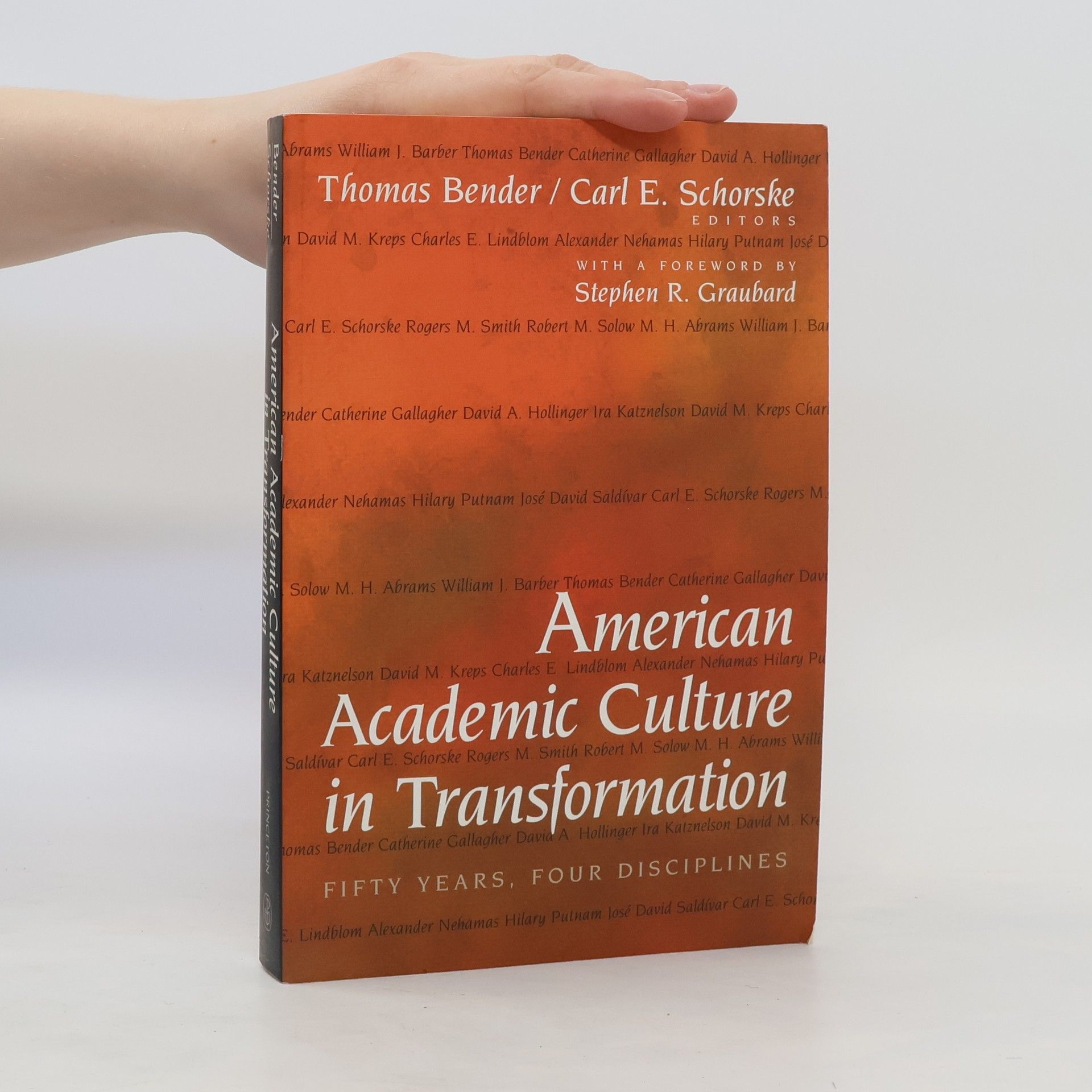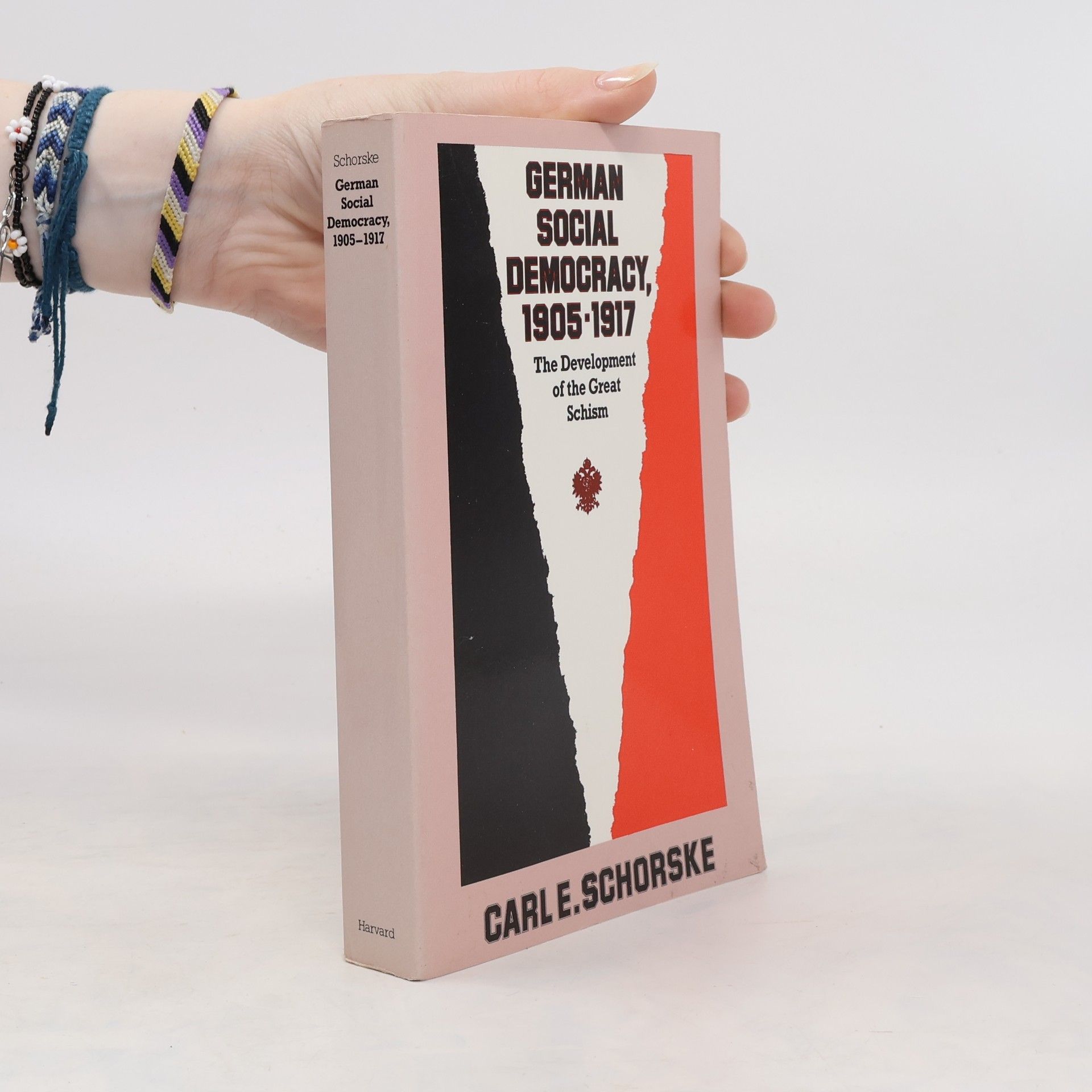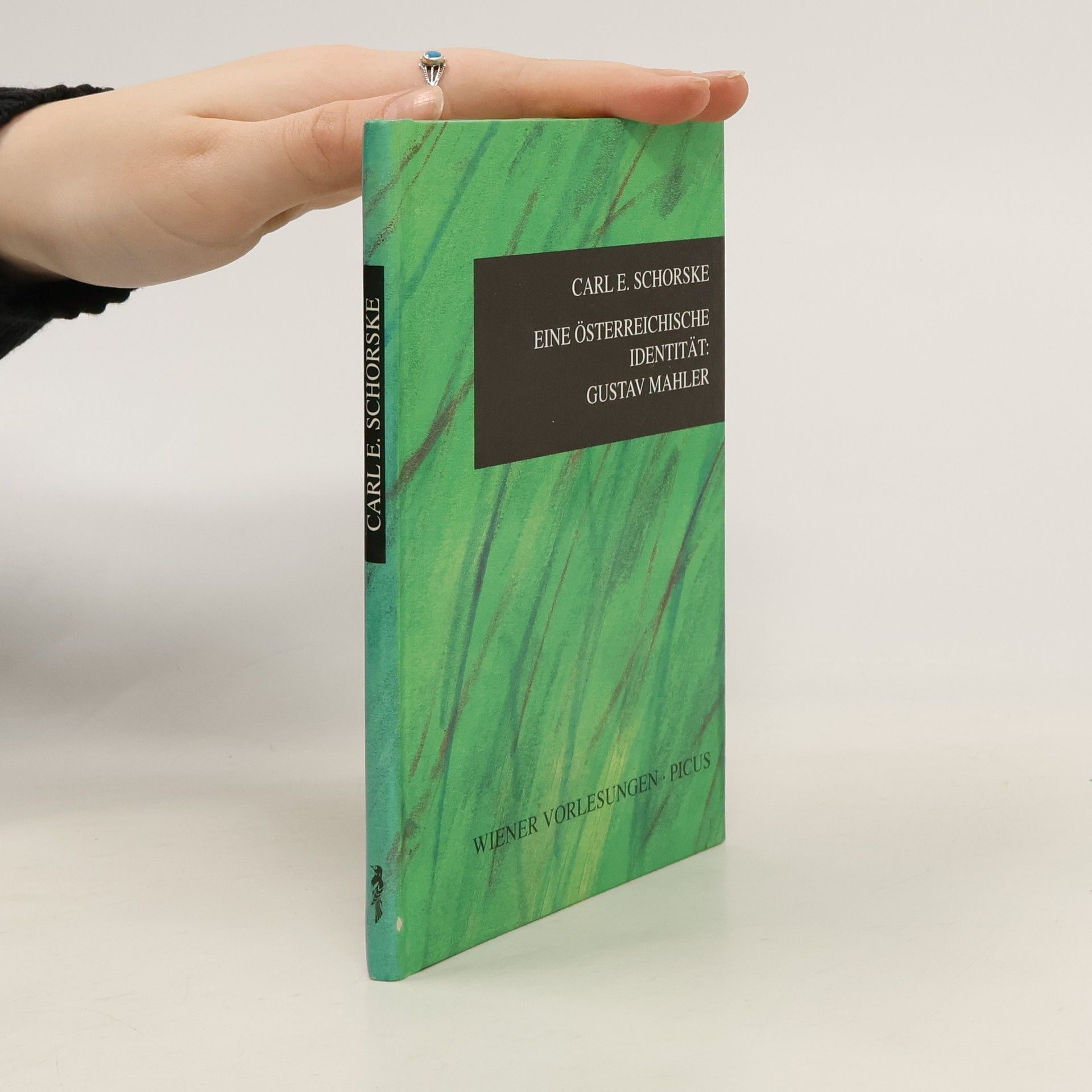No political parties of present-day Germany are separated by a wider gulf than the two parties of labor, one democratic and reformist, the other totalitarian and socialist-revolutionary. Social Democrats and Communists today face each other as bitter political enemies across the front lines of the Cold War; yet they share a common origin in the Social Democratic Party of Imperial Germany. How did they come to go separate ways? By what process did the old party break apart? How did the prewar party prepare the ground for the dissolution of the labor movement in World War I, and for the subsequent extension of Leninism into Germany? To answer these questions is the purpose of Carl Schorske's study.
Carl E. Schorske Libros
Carl Emil Schorske fue un historiador cultural estadounidense cuyo trabajo profundiza en la historia intelectual de Europa. Su escritura se distingue por sus profundas perspectivas sobre las intrincadas conexiones entre política y cultura, particularmente durante el período fin-de-siècle. Los análisis de Schorske iluminan cómo el arte y el pensamiento moldearon las transformaciones sociales, y su enfoque de la escritura histórica ha influido en generaciones de académicos. Su erudición es elogiada por su profundidad y su capacidad para hacer accesibles fenómenos históricos complejos.






Jane Kallir's comprehensive work not only charts the rise, flowering and decay of the Wiener Werkstatte, but assesses its extraordinary artistic achievements in every branch of design. In doing so, the author analyzes for the first time the dense web of connections―institutional and educational, intellectual and social―that enabled the imaginative leaders of the Werkstatte to impress upon the Austrian elite and the world beyond their visual ideals and stylistic idiom. ―Carl E. Schorske At the turn of the twentieth century, Vienna emerged as a great cultural centre that stood at the forefront of developments in music, psychology, and the natural sciences. Equally influential, and still tremendously popular today, are the designs of the Wiener Werkstatte, or Vienna Workshop, a group that was at the heart of the city's cultural scene and whose collaborators included such luminaries as the architect Josef Hoffman, the designer Koloman Moser, and the painters Gustav Klimt, Oskar Kokoschka, and Egon Schiele. This guide to the arts and crafts of fin-de-siecle Vienna is an excellent introduction to their work in all media - from architecture, furniture, ceramics, and glass, to silver, fashion, and textiles, bookbinding, toys, painting, and the graphic arts - as well as a survey of the cultural development of this pivotal period. 55 color plates and 195 black & white illustrations
American Academic Culture in Transformation
- 384 páginas
- 14 horas de lectura
Explores how four disciplines in the social sciences and humanities - political science, economics, philosophy, and literary studies - have been transformed. This book places academic developments in their intellectual and socio-political contexts, revealing the internal dynamics of disciplinary change.
Fin-De-Siecle Vienna
- 432 páginas
- 16 horas de lectura
A landmark book from one of the original scholars of our time: a magnificent revelation of turn-of-the-century Vienna where out of a crisis of political & social disintegration so much of modern art & thought was born.This edition contains:IllustrationsAcknowledgmentsIntroductionPolitics & the psyche: Schnitzler & HoffmannsthalThe Ringstrasse, its critics & the birth of urban modernismPolitics in a new key: an Austrian trioPolitics & patricide in Freud's Interpretation of dreamsGustav Klimt: painting & the crisis of the liberal egoThe transformation of the garden Explosion in the garden: Kokoschka & SchoenbergIndex
The book explores the evolution of historical thought in the context of modernity, contrasting the historicism of the nineteenth century with the detachment from history seen in twentieth-century European and American culture. Schorske argues that while modern art, architecture, music, and science emerged as autonomous fields, they still reflect attempts to grapple with the challenges of modernity. This interplay between historical awareness and modernist detachment reveals different strategies for understanding and shaping European civilization amid industrial capitalism and mass politics.
Vídeň na přelomu století
- 354 páginas
- 13 horas de lectura
Rozsáhlá publikace, poctěná prestižní Pulitzerovou cenou, je kritikou považována za jednu z nejlepších prací o společenském a kulturním vývoji v Rakousku konce 19. a počátku 20. století. Jak autor předesílá v úvodu, Vídeň období fin de siécle je přímo stvořená k tomu, aby se stala předmětem rozsáhlého výzkumu. Společensky daný charakter vídeňské kulturní elity, s její neobvyklou kombinací provincionalismu a kosmopolitismu, tradicionalismu a modernismu, představuje ideální prostředí pro studium zrodu moderní kultury 20. století. Kniha nabízí nový pohled na přední osobnosti vídeňské kultury, jako byly například psychoanalytik Sigmund Freud, malíři Gustav Klimt a Oskar Kokoschka, hudební skladatel Arnold Schönberg, architekt Otto Wagner nebo spisovatelé Arthur Schnitzler a Hugo von Hofmannsthal. Seznamuje rovněž čtenáře se světem rakouské politiky v kritickém období zhroucení liberalismu a vzrůstu antisemitismu. Prostřednictvím analýzy života tří rakouských politických osobností, dvou antisemitů (Georga von Schönerera a Karla Luergera) a jednoho sionisty (Theodora Herzla), popisuje Schorske zrod moderní masové politiky. Podrobnosti:
Der Historiker Carl E. Schorske setzt das Leben und die künstlerische Entwicklung Gustav Mahlers mit Phasen der gesellschaftspolitischen Entwicklung Österreichs zur Zeit der Jahrhundertwende in Beziehung.

